USTVOLSKAYA: Concerto for Piano, Strings & Timpani
Concerto for Piano, Strings & Timpani
performed by
Patricia Hase (Piano) and the Ensemble Galina
Conductor: Peter Leipold
With courtesy of Hans Sikorski Music Publishing Hamburg
A concert recording from the Richard-Jakoby-Hall
of the Hanover University of Music, Drama & Media in Germany
Concert Grand Piano: Steinway & Sons D-274
HD Recording · DDD · Duration: 17 Min. 43 Sec.
Digital Album · 4 Tracks · incl. Booklet


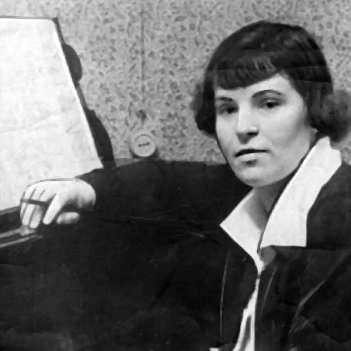
Galina Ustvolskaya: Concerto for piano, strings and timpani
"It's not you who are under my influence, it's me who is under yours". This quote by her teacher Dmitri Shostakovich has become the defining words for the relationship between himself and his pupil, Galina Ustvolskaya. The "teacher-pupil" dynamic notwithstanding, for her own part, Ustvolskaya spent her life trying to distance herself from her violent relationship with Shostakovich. This seems an obvious sign of sincerity, the pursuit of impartial and unrestrained untamedness of the composer. These adjectives also certainly best describe the few works that make up her comprehensive output, which made themselves known without adapting to any one style. Though she rarely left her hometown until her death in 2006, she was a part of the music scene in St. Petersburg both under Soviet regime and after its collapse - an enigmatic phenomenon untouched by all political or aesthetic trends. In her case, she chose the life of an outsider completely of her own accord. Ustvolskaya did not tolerate any superficial interference, according to the musicologist Olga Gladkova, out of a desire to maintain her own individuality, compoure, and intentions. Therefore she never took commissions, on the contrary, she refused even partial interpretations of her work if the composer did not appear "real" to her.
Especially in her "Concerto for piano, strings and timpani", written in 1946, the composer starts to withdraw herself from her academic influences, to strike a new path, and to find completely new ways of expression. It is not without motive that she decided to start her official list of works with this concerto. The first noticeable feature is the single-piece form, which is described by the composer as cohesive but still contrasting.
The opening theme is highly concentrated within the Rhythm. No notes seem to be wasteful. The piano breaks out of the silence like an explosion with the specific dotted thirty-second notes in fortissimo that are repeated in unison by the orchestra and which are concluded by the timpani. All the followings motives are developed from the basic theme. Olga Gladkova compared the concentrated main theme with a nuclear reaction - after the explosion many infinitely small atoms are produced, instantaneously destructive and creative. Close beside is a plain melody in subito - pianissimo, circling around itself, not leading anywhere. This is a very fundamental characteristic of the later works by Ustvolskaya. The second theme, which branches out wildly, seems to come rushing in a fugue. But academic processes and stencils are avoided consequently and the fugato is being constantly taken to explore new avenues, like a kaleidoscope, out of which unexpected new pictures are formed. In addition to the rigid and concentrated 4/4 measure, the quiet secondary theme is at the quietly flowing 6/8 measure. The "continuity", which is described by the composer, happens also by the very strong contrasts.
Especially remarkable is the coda of the concerto. The rhythmically striking dotted thirty-second notes are taken from the initial theme and with full force repeated again and again.
An unprecedented massive structure comes into being, which instead of running to the disaster leads into a C major chord, which appears at the moment of most extreme tension and repeats in a big crescendo until the end. The immense focus on one rhythm, the constant repetition of this rhythm and the unbridled force of it, speaks to the forementioned monstrous new language of the composer.
Although the great crescendo of the coda is written in C major, it seems to evoke various kinds of associations. In the dialogue with the young musicians of the ensemble, I would like to describe three different impressions. On the one hand there is the feeling of generous grace, of forgiveness, the cathartic effect after a prayer. Facing this sensation is the feeling of being threatened by a wall that is approaching you relentlessly, without ability to escape. The third association is similar to the theme of Shostakovich's Fifth Symphony - forced rejoicing, created under threat. An eagerly awaited end of the war, but an ending with terror.
Peter Leipold
Translation by Catie Leigh Laszewski
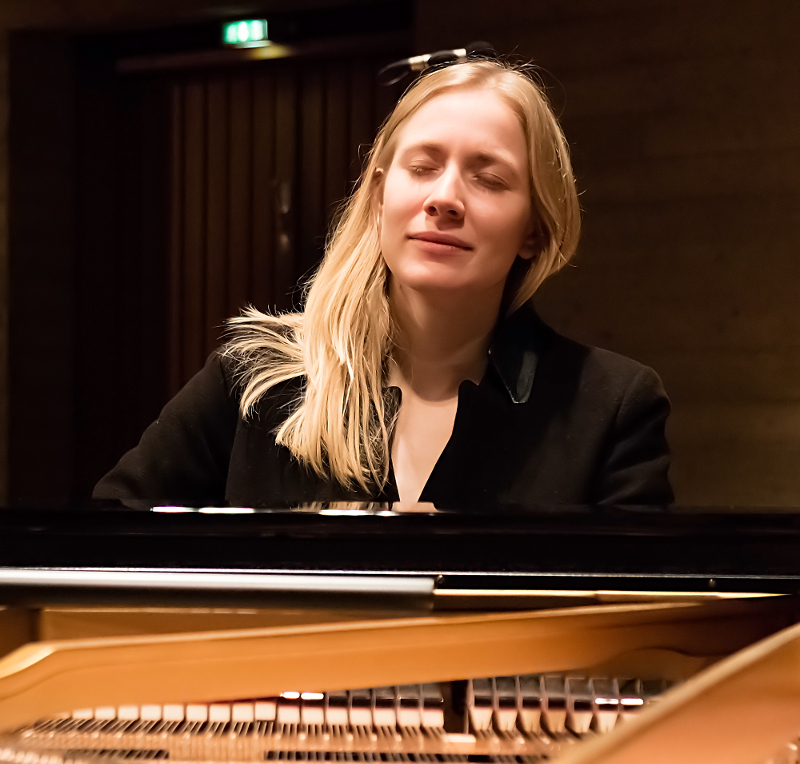
B
ridging distances, bringing music closer to the people in a completely natural intimate way - these are the strengths of the pianist Patricia Hase, born in 1989 in Wiesbaden. Educated in one of the talent-hotbeds of the international piano elite at the Hanover University for Music, Drama and Media in the studio of Matti Raekallio, the young musician has set for herself the task of establishing through her music the connections between highly intellectual works of Western culture and the everyday life of the listener. In doing so she captivates with her warm sound, profound interpretations, and mature virtuosity. In addition to her pet project, the interpretation of the works of Franz Schubert which are celebrated by the press and public, Patricia likes to forge a bridge between "past" and "present", such as this recording, which ranges from the 1770-born Ludwig van Beethoven to Galina Ustvolskaya, who died in 2006.
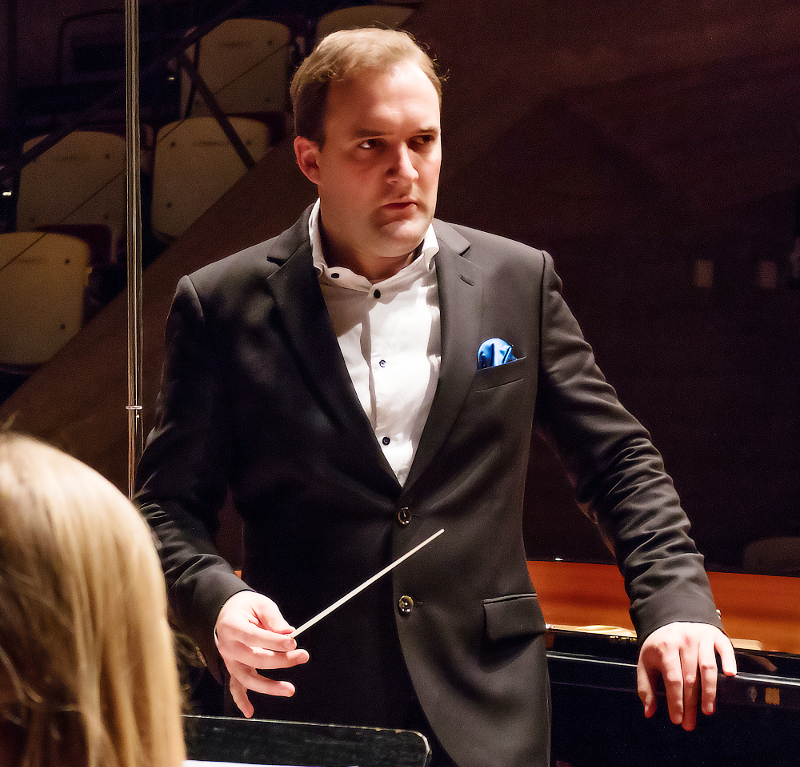
S
ince the beginning of her studies Patricia Hase has enjoyed a close friendship with the conductor Peter Leipold, born 1987 in Stuttgart. Since then, numerous concerts have led the two young musicians throughout Europe. The work of Peter Leipold, who started his career at the Theater Erfurt and was honored by the Hannoversche Allgemeine Zeitung for his "quality of musical fine drawing", fascinates in his role as a seeker of and servant to the rich facets and colors of music that can be unveiled in the score and by the orchestra, as a conductor who represents the bridge between the musical performer and the score. With the recording of "Concerto for Piano, Timpani and String Orchestra" by Galina Ustvolskaya, Peter Leipold follows his passion for new music, on which he already specialized during his conducting studies for music of the 20th and 21st centuries at the Conservatorio della Svizzera Italiana in Lugano.
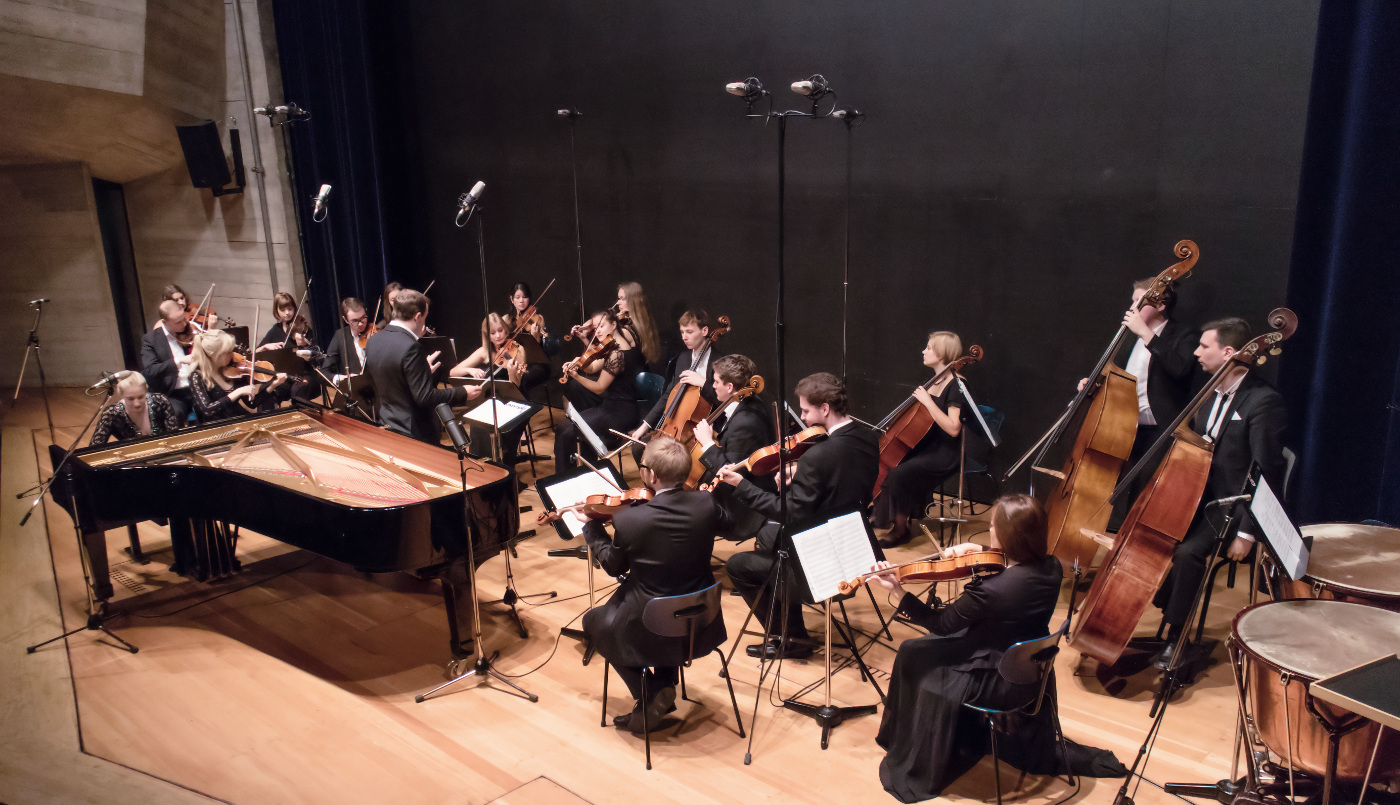
Ensemble Galina - the search for harmony
The Ensemble Galina was founded in October 2014 and formed out of the desire to make music at a level where the quality of music and friendship come together. The young chamber orchestra is made up of 18 musicians - music students and emerging professionals from all over Germany. With the pianist Patricia Hase and the conductor Peter Leipold the ensemble makes it its mission to inspire a new sense in the musical performance - searching for harmony in the dialogue between soloist and ensemble and between composer and performers, honoring the true sense of the word »concertare«. For the name of the ensemble, they chose the Russian composer Galina Ustvolskaja (1919-2006), her »concert for piano, strings, and timpani« becoming the foundation stone on which the Ensembles was built. Ustvolskaja, who had to fight for cultural survival as a composer under the Soviet Regime touched us musicians not only with her life story, but with her music’s unbelievable emotional approachability, sincerity, and depth. The urgency in her existential musical expression became a very special motivation for the young musicians. To inspire true emotion as well as to search out interesting contemporary forms of expression are the goals and purpose of the Ensemble. With this new approach, which is shaped through collective dialogue and musical discourse, the Ensemble Galina endeavors to preserve the great cultural property in our time.
Peter-Lukas Gebert ~ Translation by Catie Leigh Laszewski
The Ensemble Galina
Violin: Friederike Jahn (Concert Master), Rebekka Gebert, Florian Giering, Emilia Grotjahn, Cornelius Köhler, Erika Lunz, Alina Riegel, Friederike Schindler, Saskia Becker-Foß, Inara Waiss
Viola: Peter-Lukas Gebert, Julia Yeon-Joo Oh, Raphael Tietz · Cello: Ingmar Escher, Inka Jans, Jaromir Kostka
Double Bass: Hermann Haffner, Lukas Rudolph · Timpani: Jonas Krause
The Ensemble Galina is supported by the "circle for the promotion of the Hanover University of Music, Drama and Media e.V.", the banking house Hallbaum,
the Wellness-Hotel Diedrich in Hallenberg (Sauerland) and the "funding pool gender of the Hanover University of Music, Drama and Media".
P
ublishing Authentic Classical Concerts entails for us capturing and recording outstanding performances and concerts for posterity. The performers, audience, opus and room enter into an intimate dialogue that in its form and expression, its atmosphere, is unique and unrepeatable. It is our aim, the philosophy of our house, to enable the listener to acutely experience every facet of this symbiosis, the intensity of the performance, so we record the concerts in direct 2-Track Stereo digital HD. The results are unparalleled interpretations of musical and literary works, simply - audiophile snapshots of permanent value. Flourishing culture, enthralling the audience and last but not least also you the listener, are the values we endeavor to document in our editions and series.
The concert grand piano is incontestably the king of instruments. We could now wax lyrical about its incomparable dynamics and go into its ability to go from the tenderest of sounds in a soft minor key to the magnificent power of a fortissimo, or I could rhapsodise about its impressive size and elegance. But what makes this instrument really fascinating is its individuality, since each one is unique in itself - created by a master. A concert grand has a life all of its own that a virtuoso can really "get into" and hence bring the work of the composer to life. In our Grand Piano Masters Series, we get into the character and soul of the concert grand piano and experience, during the performance itself, the dialogue between the instrument, the virtuoso and the performance space.
Andreas Otto Grimminger & Josef-Stefan Kindler, K&K Verlagsanstalt

***** Wonderful performance and very good recording quality
Wonderful performance and very good recording quality. I love the beauty of the interpretation and the combination of the two works!

The first recording played without blunders is out!
The first recording of the Concerto for Piano, Strings & Timpani played without blunders is out!

Featured on Spotify
This release is featured in the editorial playlist on Spotify:
COMPOSER WEEKLY: GALINA USTVOLSKAYA

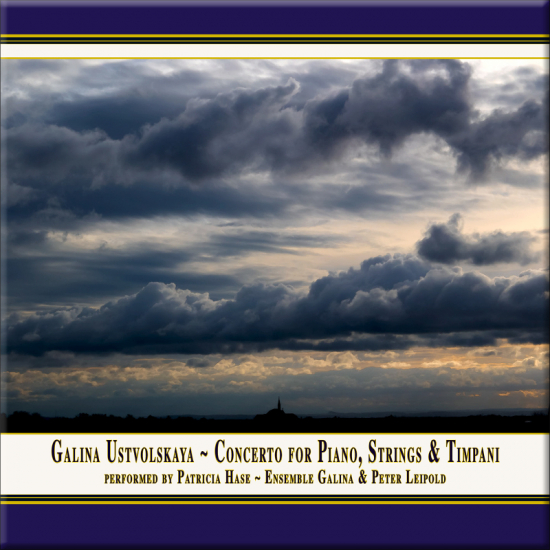



The first recording played without blunders is out!
3. September 2016 - 19:27 — kuk-art.com'Galina Ustvolskaya official' on Facebook
***** Wonderful performance and very good recording quality
3. September 2016 - 19:28 — kuk-art.comAn Amazon Customer on July 31, 2016
Customer Rating: 5 stars out of 5
Featured on Spotify
6. March 2018 - 12:45 — kuk-art.comCOMPOSER WEEKLY: GALINA USTVOLSKAYA
https://open.spotify.com/user/spotify/playlist/37i9dQZF1DX21bRPJuEN7r